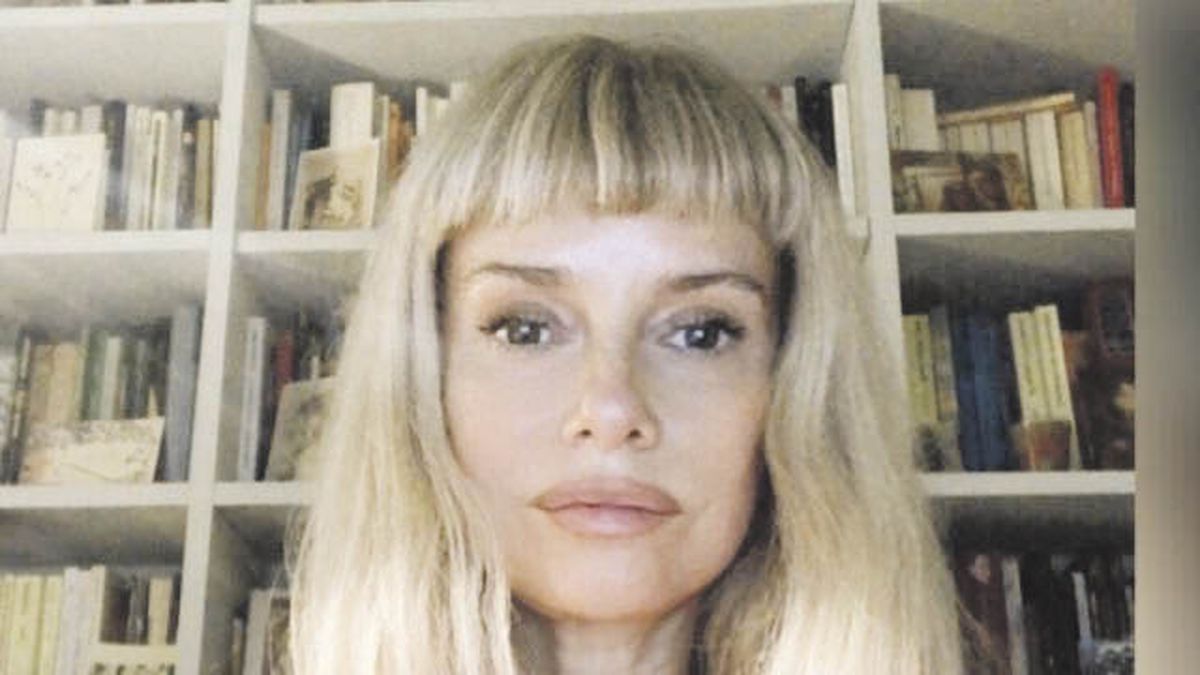Florence Canale: The hit movie of the 1980s made that story widely known. In “La libertina”, my previous novel, I told that of Madame Marie Anne Perichón de Vandeuil, La Perichona, Camila’s grandmother, and it was the beginning of the saga of the women of that family, including the tragic fate of that girl , which has everything to be recounted. The success of the film had a lot to do with the sexual tension between a priest and his parishioner, between Imanol Arias and Susú Pecoraro.
Q .: When you were writing, did the images of Arias and Pecoraro cross?
F.C.: For women, the character that Imanol Arias played was brutal. From “Camila” Imanol became a superstar in Argentina. There are many chronological errors in the film, I suppose they have to do with the fact that María Luisa Bemberg had to condense the story into an hour and a half, which focused on forbidden love, sexual transgression and execution. It was impossible for the image of Susú to cross my mind when writing, because she is a big girl and Camila dies at the age of twenty, she was a little girl at that time. When she is seen in Marco Sastre’s bookstore, leafing through prohibited books, that can’t be because Sastre had already closed the bookstore and had gone to live in San Fernando, and if it was at the time of the “Literary Room” of La bookstore, Camila had nine years and not twenty. Imanol playing the dark-haired priest of Tucuman, perhaps he ever crossed my mind when writing. But some readers saw it permanently, well everyone makes their own movie.
Q .: What was yours?
F.C.: I found it interesting to tell how two very religious young people after the love affair do not lose their faith, they do not become crusaders of atheism or questioners of the Church. It is fascinating how they allowed themselves to be dominated by passion until they gave up their lives, a true event that recalls classic tragedies. They were two provocateurs chastened by the government of the tyrant Rosas. Camila is asked to declare that she was raped by that priest and she does not endorse it, she defends her love knowing that that is why she will die. Rosas gathers the lawyers, who ask for the death penalty. Camila’s father asks for the death penalty. The Church asks for an exemplary punishment. And also the society, lashed out by the opposition press from Chile and Montevideo that maintains that it is an example of the Sodom and Gomorrah of Rosas. Sarmiento from Chile writes “parents fear that their girls will be seduced by those men in cassocks.” And this happens when the hierarchy of the Church lives with barraganas and their children. Ladislao and Camila could have carried their relationship that way, he giving mass in Socorro and she catechizing children, and perhaps married to another man, having furtive encounters. They wanted to challenge the status quo, and they did.
Q .: Does the time of Rosas encourage you to write?
F.C.: The trilogy “Blood and desire”, “Lust and power” and “The hour of exile”, which correspond to the first government, the second and the exile of Rosas. In “Pecadora” the execution of Camila and Ladislao occurs during the second Rosas government and in “Lust and power” I play it in passing because it was a bombing of the opposition against Rosas, it is the beginning of the collapse and the escape of the Restorer.
P .: The relationship of a young woman with a priest at the time of “Camila” had an international success with the novel and the series “The bird sings until it dies.”
F.C.: The seduction of the man in a cassock is for the woman the attraction of the forbidden. I remember the priest of Montgomery Clift in “My Secret Condemns Me.” The cinema, the fiction, chooses handsome men who with cassocks cause concern to the ladies. The dark-haired Ladislao, nephew of the governor of Tucumán, when he is persecuted is described as black who took the white woman. I wondered how a girl from Buenos Aires society chooses someone who was socially erased, who was not a politician, military, landowner or merchant, the models of masculinity at that time. Well, she was the granddaughter of the libertine Perichón, who encouraged her to be different.
P .: She was a model, singer, actress, journalist and finally decided to be the author of romantic novels.
F.C.: I wanted to try things, add experiences, and this is where I want to stay, this is my ninth novel. It has been ten years since the first “Pasión y traición” was published, the story of Remedios and San Martín, which now has eleven editions and is still being read.
Source From: Ambito
David William is a talented author who has made a name for himself in the world of writing. He is a professional author who writes on a wide range of topics, from general interest to opinion news. David is currently working as a writer at 24 hours worlds where he brings his unique perspective and in-depth research to his articles, making them both informative and engaging.




